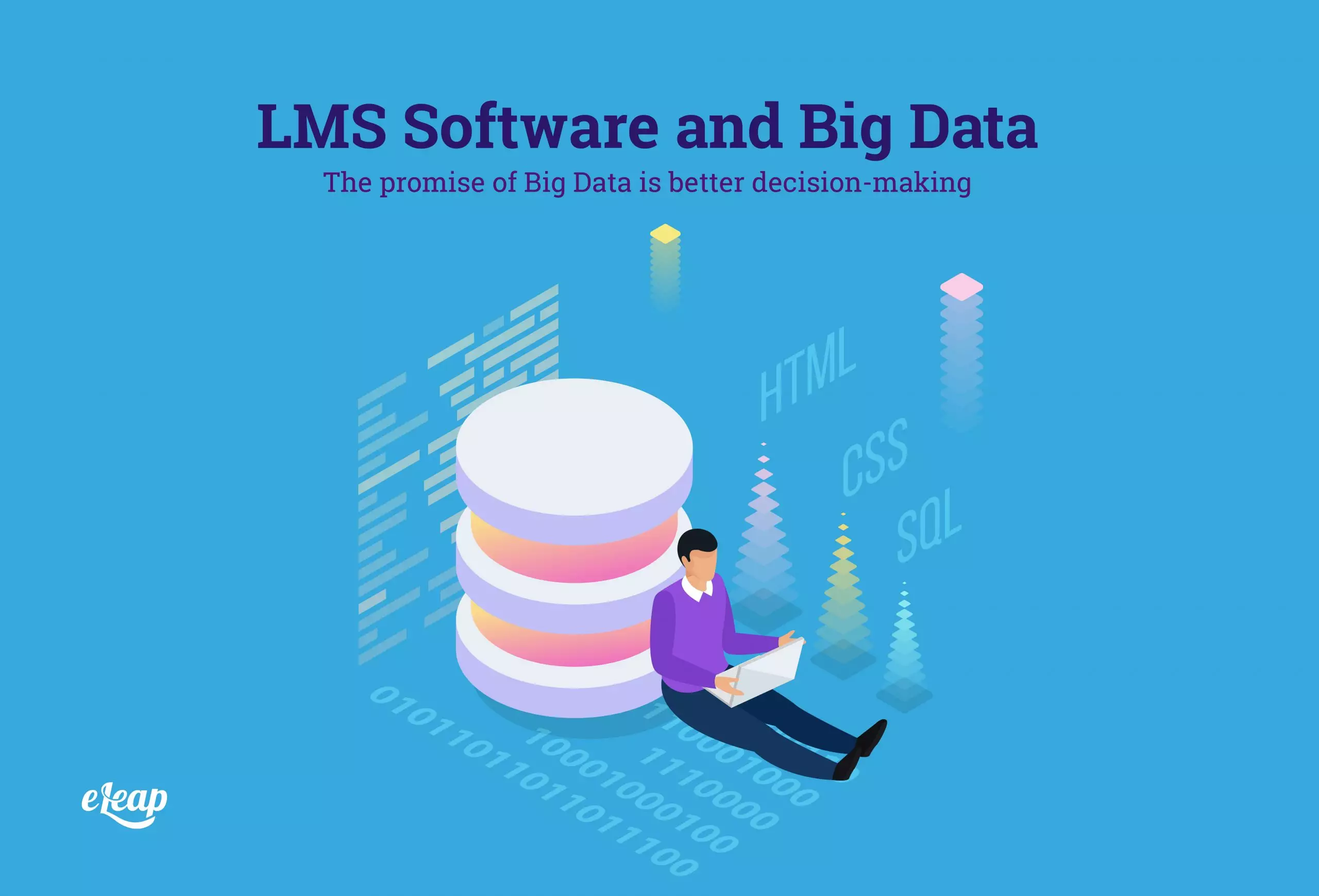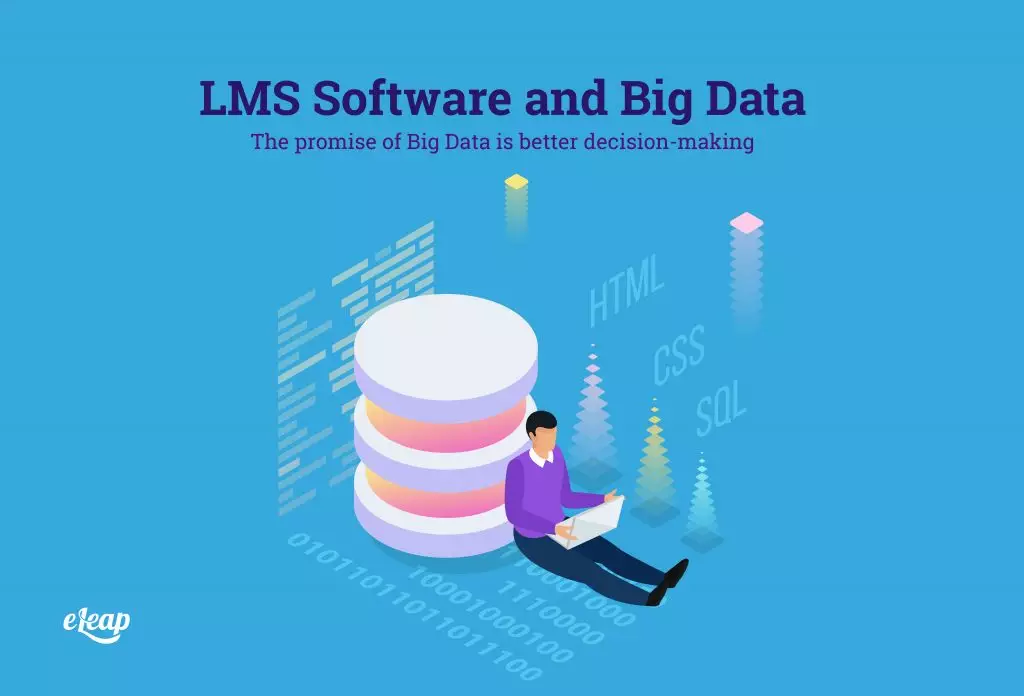LMS Software and Big Data
The promise of Big Data is better decision-making

Most LMS software these days includes some amount of data analytics and reporting, although different systems vary widely in these capabilities. You want to make sure the LMS software you choose has powerful, robust, far-reaching data collection, analysis and reporting capabilities. In short, you want your LMS to be able to handle Big Data.

The reason why is simple: The promise of Big Data is better decision-making. When applied to your company’s learning and training programs, this translates into making better decisions about how to improve your learning and training efforts for better outcomes.
There are two distinct branches in the stream of Big Data coming into your LMS. The first has to do with various aspects of the learning process as experienced by the participants, your employees. The data you collect through your LMS software in this strand is all about enhancing the learning process in ways that result in better learning outcomes for participants. Some of the metrics you’d want to offer participants include the following learner indicators:
- Progress: Learners love to know where they’re at as they progress through a course or module. They want to know what’s coming up as well. By giving them a simple, easy visual snapshot of the progress they make, they will be much better equipped and motivated to keep going.
- Success: Your learners also want to know how they’re doing beyond knowing where they’re at in the process. They want to know if they’re “making the grade” or not. This indicator also offers an opportunity to introduce gamification and a competitive aspect if learners can see their success indicator compared with others engaged in the content.
- Interactive Engagement: Plenty of research has shown that when learners have more opportunities to interact with fellow learners and instructors, they achieve better learning outcomes. Let learners see how they’re doing on this metric and they will naturally do more of it, which will enhance their learning.
Leveraging data analytics into key learner metrics is important, but so are a host of items to pay attention to on the administrative side of learning. Your LMS software should help you track the following key metrics:
- Participation: Are you learners engaging with the content as much as they need to and as quickly as you need them to? Your LMS software should make this a very easy snapshot to see at any given moment.
- Success: Your students need to know how they’re doing, and so does your company. This is why your LMS software needs robust learning assessment capabilities, as well as the functionality to summarize it and present it in an easy-to-understand format to you.
- Exposure/Success Ratio: How much exposure to a given topic is needed in order for a learner to make the grade you’re looking for? Obviously, this will vary between students, which is crucial for you to know in order to make your learning individually responsive.
- Quality and Satisfaction: Soliciting feedback from students at various points helps identify ways that the course or LMS itself can be improved for better outcomes.
These are just a few of the ways that the right LMS software can leverage Big Data into better decision-making to improve all of the learning and training programs in your company. Want to find out if eLeaP is the right LMS software tool for your company? Sign up for a free trial or contact us by telephone at 1-877-624-7226 or email us at help@eleapsoftware.com and ask us any questions you may have.
Free Resources – Additional information?